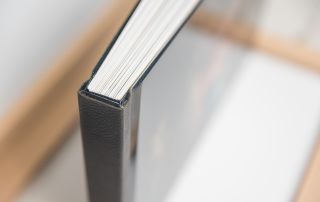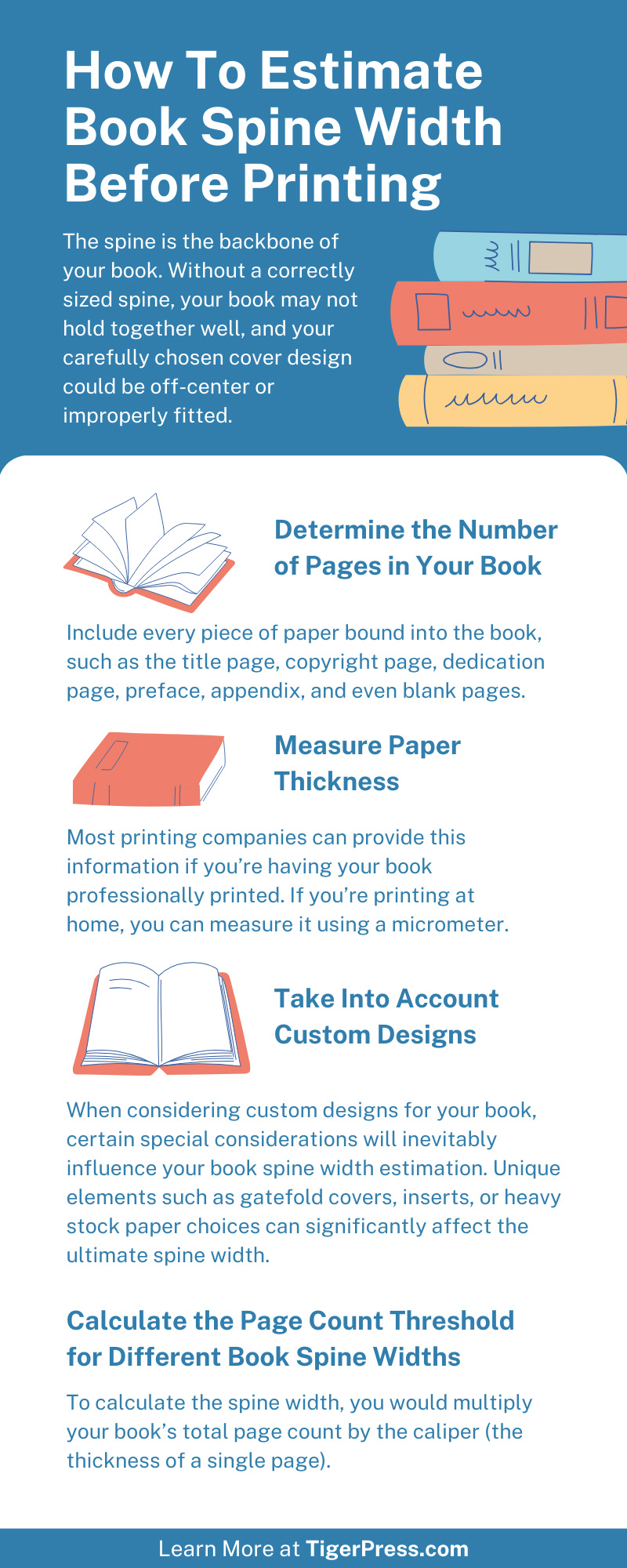The spine is the backbone of your book. Without a correctly sized spine, your book may not hold together well, and your carefully chosen cover design could be off-center or improperly fitted. Estimating the book spine width before printing is a crucial but often overlooked step in the book-publishing process—but don’t worry, we’re here to guide you through it.

Whether you’re a seasoned publisher or a novice author taking the first step into the world of printing, this guide will give you the know-how to estimate your book spine width accurately. By the end of this guide, you can ensure your book has a professional look and feel.
Understand the Purpose of Book Spine Width Estimation
Book spine width estimation serves more than just aesthetic purposes; it’s fundamentally about the structural integrity of your printed book. The spine width is essentially the space that holds together the entirety of your book’s content. If your spine is too thin, your book may not have the strength to support its pages, causing the pages to come loose or fall out entirely. Conversely, if the spine is too thick, it can result in an awkward, bulky feel to your book, making it uncomfortable to carry or read.
Moreover, the spine is where the title and author’s name are, making it a critical aspect from a marketing perspective. Potential readers or customers often scan bookshelves or catalogs by looking at the book spines. Ultimately, having a spine that’s the correct width displays the title and author’s name properly, increasing the likelihood of your book catching a potential reader’s eye. The estimation of the book spine width is an art that marries both form and function, ensuring your book looks professional and endures the test of time.
Determine the Number of Pages in Your Book
The number of pages in your book also plays a pivotal role in determining the spine width. A larger number of pages will naturally require a wider spine to accommodate them. However, when counting the number of pages, don’t just consider the main content. Include every piece of paper bound into the book, such as the title page, copyright page, dedication page, preface, appendix, and even blank pages.
Every single leaf counts when calculating the spine width. Accuracy here is essential. Miscounting even a few pages can throw off your entire estimation and result in a spine that doesn’t fit your book correctly. After you have an accurate page count, you can move on to the next step of the calculation and measure paper thickness.
Measure Paper Thickness
To accurately estimate the spine width of your book, you need to measure the thickness of the paper you’re using. This might sound technical, but it’s a straightforward process. Most printing companies can provide this information if you’re having your book professionally printed. If you’re printing at home, you can measure it using a micrometer.
The thickness of a single sheet is known as its caliper, and you’ll measure it in millimeters or points (1 point = 0.001 inch) if you’re using a micrometer. You should also consider the type of paper you’re using. For instance, gloss paper is typically thinner and smoother than matte paper, affecting your book’s overall thickness.
Once you have the caliper of your chosen paper, you can calculate the total width of your book’s interior pages. Multiply the caliper by the total number of pages in your book, including blank pages and any inserts. Remember, if you’re using a double-sided format, each leaf (or physical sheet of paper) will count as two pages. This calculation will give you the width of your book block, an essential element in estimating the spine width.
Remember that the spine width isn’t just the width of the book block. You also must consider the cover material’s thickness. This will depend on the type of cover you choose (hardcover or softcover) and the material’s thickness itself. Usually, printing companies have standard cover materials with known thicknesses, making this step relatively easy.
Take Into Account Special Considerations for Custom Designs
When considering custom designs for your book, certain special considerations will inevitably influence your book spine width estimation. Unique elements such as gatefold covers, inserts, or heavy stock paper choices can significantly affect the ultimate spine width. For instance, using heavier, thicker paper for interior pages or choosing a hardcover with a wraparound design will necessitate a wider spine than a paperback with standard-weight paper. Also, if you decide to include fold-out pages or inserts in your book, each of these elements will add to the book block’s thickness and, consequently, to the spine width.
Your printing partner can provide invaluable assistance in this regard, offering expert guidance on how custom design elements could impact your spine width requirements. Collaborative dialogue with your printer will ensure that your book is both visually stunning and structurally sound.
Calculate the Page Count Threshold for Different Book Spine Widths
The concept of the page count threshold is crucial to understand when estimating the book spine width. Different binding methods accommodate different page counts, directly influencing the spine width.
For instance, saddle-stitching (where pages are folded in half and stapled through the fold line) typically works best for books of around 64 pages or less. Perfect binding—a method used for paperback or softcover books—can handle a larger page count, typically up to 500 pages. For books with a page count exceeding this, a case-binding method (hardcover) would be more suitable.
Understanding the page count threshold for different binding methods will provide an appropriate spine width range for your book. Consult with your printing company about these thresholds since they could vary based on their specific production capabilities.
To calculate the spine width, you would multiply your book’s total page count by the caliper (the thickness of a single page). This will give you the width of the text block. Remember to add the thickness of your cover material to this figure to arrive at your final spine width.
If you’re not confident in your math, you can always have an online spine width calculator do the math for you!
By following the steps above, you should be able to easily estimate your book spine width before you start printing. The good news is if you have any questions, need help with your calculations, or are just trying to find a printing partner you can rely on, Tigerpress is here to help!
We offer a vast array of custom printing services to ensure your book comes out exactly as you envisioned. So go ahead and get started on estimating your book spine width with confidence, and we’ll help you create a masterpiece that will stand out on any bookshelf!


